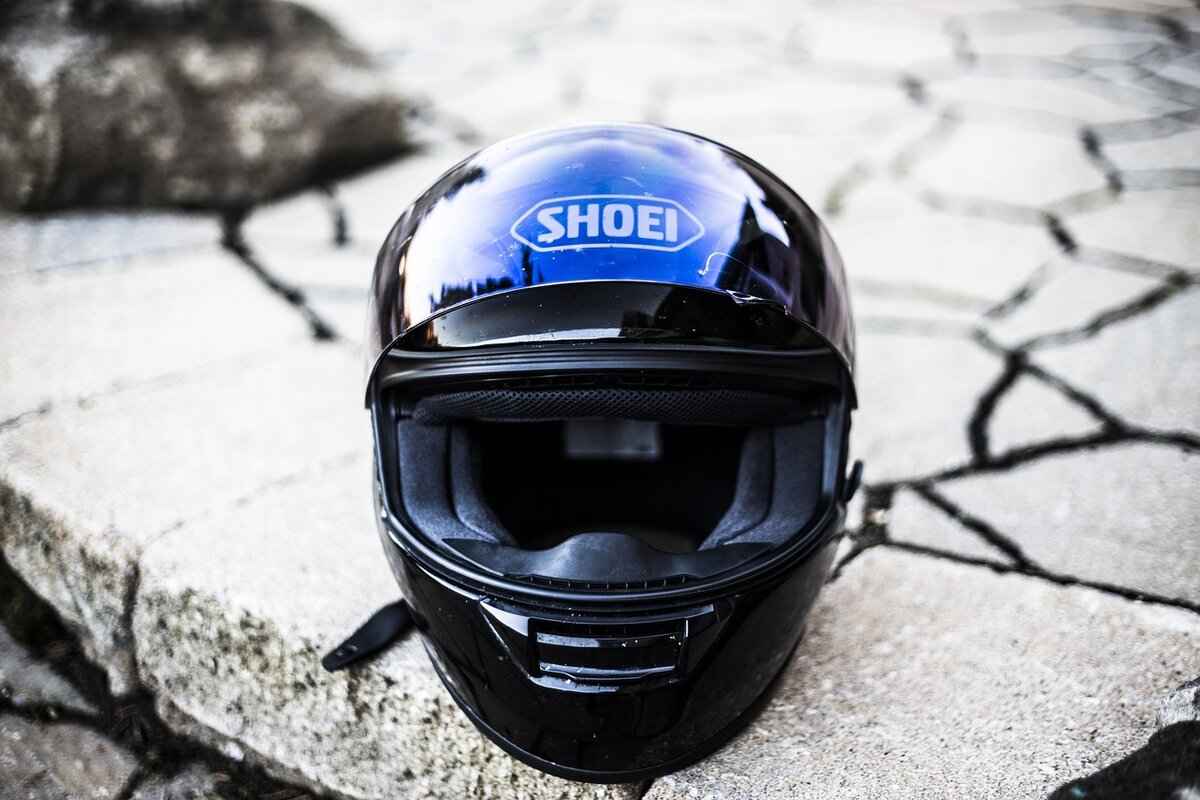This article explores effective methods for accommodating glasses within motorcycle helmets, ensuring comfort and safety for riders who require vision correction while on the road. Many motorcyclists depend on corrective eyewear, and it is essential to find a balance between safety and comfort while wearing a helmet. This guide offers practical solutions for creating space for glasses in motorcycle helmets, allowing riders to enjoy their journeys without compromise.
Understanding the Importance of Helmet Fit
A proper helmet fit is crucial for both safety and comfort. A helmet that fits well protects the head effectively during an accident, while also providing comfort during long rides. Riders who wear glasses must consider how their eyewear interacts with the helmet. An ill-fitting helmet can cause discomfort, pressure points, and even distractions while riding. It is vital to choose a helmet that accommodates glasses without sacrificing the snug fit needed for safety.
Choosing the Right Helmet for Glasses
Selecting a motorcycle helmet that accommodates glasses is essential. Look for helmets with features such as:
- Cutouts or channels: These allow glasses to fit comfortably without being pinched.
- Wide eye openings: A larger opening can help glasses fit securely without obstruction.
- Adjustable padding: Helmets with removable or adjustable padding can be customized to fit glasses better.
Researching various helmet styles and their compatibility with eyewear can significantly enhance your riding experience.
Adjusting the Interior Padding
Modifying the interior padding of a helmet can create additional space for glasses. Riders can:
- Remove or replace padding: This can provide necessary space for glasses without compromising the helmet’s integrity.
- Use thinner padding options: Opting for thinner padding materials can create extra room while maintaining safety.
Ensuring that adjustments do not affect the helmet’s protective qualities is crucial. Always consult the manufacturer’s guidelines when altering helmet padding.
Utilizing Helmet Accessories
Various accessories can enhance the compatibility of helmets with glasses. Consider using:
- Face shields and visors: These can affect how glasses fit within the helmet. Choosing the right shield can improve comfort and visibility.
- Helmet liners and inserts: Specialized liners designed to provide additional space can significantly enhance comfort for glasses wearers.
Exploring these options can lead to a more enjoyable riding experience.
Choosing the Right Glasses for Riding
The type of glasses you wear can impact your riding experience. Look for features such as:
- Lightweight and durable frames: These are essential for comfort during long rides.
- Anti-fog and UV protection lenses: These features are crucial for safety, enhancing visibility while riding.
Choosing the right eyewear can significantly affect your comfort and safety on the road.
Adjusting Your Glasses for Comfort
Sometimes, simple adjustments to your glasses can improve their fit under a helmet. Consider:
- Adjusting the temples and nose pads: This can enhance comfort when wearing glasses under a helmet.
- Using retainers and straps: These accessories can help secure glasses while riding, preventing them from shifting.
Making these minor adjustments can lead to a more enjoyable and distraction-free ride.
Testing the Fit Before Riding
Before hitting the road, testing the fit of both the helmet and glasses is vital. Follow these steps:
- Wearing the helmet with glasses: This is crucial for assessing fit and comfort.
- Making final adjustments: Fine-tuning fit before every ride ensures optimal safety and comfort.
Taking the time to test and adjust can make a significant difference in your riding experience.

Understanding the Importance of Helmet Fit
A proper helmet fit is crucial for safety and comfort while riding a motorcycle. The fit of a helmet not only impacts the level of protection it offers but also significantly affects the overall riding experience. When a helmet fits correctly, it can provide the necessary support and stability, allowing the rider to focus on the road ahead without distractions.
One of the primary concerns for riders who wear glasses is how the helmet fits around their eyewear. A well-fitted helmet should accommodate glasses without causing discomfort or pressure points. If the helmet is too tight, it can lead to headaches and fatigue, while a loose helmet may not provide adequate protection in the event of an accident. Therefore, ensuring that the helmet fits snugly around the head while allowing enough space for glasses is essential.
Moreover, a helmet that fits properly helps to reduce wind noise and turbulence, making for a more enjoyable ride. Riders often underestimate how much a poor-fitting helmet can detract from their experience. Wind rushing into a poorly fitted helmet can create distractions, making it difficult to concentrate on riding. A snug fit also helps in keeping the helmet securely in place during sudden movements or impacts.
Compatibility with glasses is another critical aspect of helmet fit. Riders who require vision correction must consider how their eyewear interacts with the helmet. Some helmets are specifically designed with additional space or features that accommodate glasses, making it easier for riders to wear them comfortably. This compatibility is vital for ensuring that riders can see clearly, which is crucial for their safety on the road.
In addition, the interior padding of the helmet plays a significant role in achieving the right fit. Riders can often adjust the padding to create more space for glasses or to enhance overall comfort. Customizable padding options allow riders to tailor their helmet to their specific needs, ensuring that both the helmet and glasses can coexist without discomfort.
Ultimately, understanding the importance of helmet fit goes beyond just safety; it encompasses the entire riding experience. Riders should take the time to find a helmet that not only protects them but also allows for the seamless integration of their glasses. By prioritizing fit, riders can enjoy a more comfortable and secure ride.

Choosing the Right Helmet for Glasses
Choosing the right motorcycle helmet when you wear glasses is not just about style; it is a crucial aspect of ensuring safety and comfort while riding. Riders who require vision correction need to consider specific features in helmet design that accommodate eyewear. This article delves into various helmet styles and their compatibility with glasses, helping riders make informed choices.
Motorcycle helmets come in various styles, including full-face, modular, open-face, and half helmets. Each style has unique characteristics that can impact how well they accommodate glasses:
- Full-Face Helmets: These helmets provide the most protection and usually have a snug fit. Look for models with a wider eye port to allow for easier glasses placement.
- Modular Helmets: These helmets feature a flip-up front, making it easier to put on and take off glasses without removing the helmet. This added convenience can be beneficial during short stops.
- Open-Face Helmets: While they offer less protection, they typically provide more space for eyewear. Riders should ensure that the helmet’s fit does not compromise safety.
- Half Helmets: These helmets offer minimal coverage and may not be suitable for glasses wearers due to their open design, but they can be comfortable for short rides.
When selecting a helmet that accommodates glasses, consider the following features:
- Padding Configuration: Helmets with adjustable or removable padding can create extra space for glasses. Look for models that allow for customization to enhance comfort.
- Visor Compatibility: Ensure the helmet has a visor that does not interfere with the glasses. Some helmets come with integrated sun visors that can be adjusted to accommodate eyewear.
- Weight: A lighter helmet can reduce strain on the neck, especially when wearing glasses. Heavier helmets may cause discomfort during long rides.
It is essential to try on helmets while wearing your glasses to assess comfort and fit. Here are some tips:
- Wear Your Glasses: Always test the helmet with your glasses on. This will give you a true sense of how well the helmet accommodates your eyewear.
- Check for Pressure Points: Ensure that the helmet does not create pressure points on your temples or nose, which can lead to discomfort during long rides.
- Adjust the Straps: Properly adjusted straps can help secure the helmet in place, preventing it from shifting and potentially causing discomfort to your eyewear.
Don’t hesitate to seek advice from helmet retailers or experienced riders. They can provide valuable insights into which helmet models work best for glasses wearers. Additionally, online reviews and forums can offer real-world feedback from fellow riders, helping you make a more informed decision.
By understanding the various helmet styles and features that accommodate glasses, riders can enhance their safety and comfort on the road. Selecting the right helmet is essential for a pleasant riding experience, allowing you to focus on the journey ahead.

Adjusting the Interior Padding
of a motorcycle helmet is a crucial step for riders who wear glasses. Many helmet designs are not inherently compatible with eyewear, which can lead to discomfort or even safety issues. By modifying the padding, you can create the necessary space for your glasses, enhancing both comfort and fit. This section will provide you with detailed guidance on how to effectively adjust or replace the padding in your helmet.
To begin, it’s important to understand that the padding inside your helmet serves multiple purposes. It not only provides comfort but also absorbs impact during a collision. Therefore, any modifications should be done carefully to ensure that the helmet still meets safety standards. Before making any changes, consider the following steps:
- Assess the Current Padding: Remove the interior padding from your helmet and evaluate its thickness and material. This will help you determine whether you need to adjust, replace, or simply reposition the padding.
- Choose the Right Materials: If you decide to replace the padding, look for thinner or more compressible materials that still offer adequate protection. Memory foam or gel pads can be great options as they mold to the shape of your head and glasses.
- Measure for Comfort: Before reassembling your helmet, put on your glasses and test how they fit with the current padding. This will help you identify the areas that need adjustment.
Once you have assessed and selected the appropriate materials, you can proceed with the adjustment process:
1. Remove the existing padding carefully to avoid damaging the helmet.2. Cut or trim the new padding to fit the helmet's contours.3. Secure the new padding in place using adhesive or Velcro, ensuring it does not interfere with the helmet's safety features.4. Test the helmet with glasses on to confirm the fit.
For those who want a more customized fit, consider using removable padding systems. These systems allow you to swap out padding easily, accommodating different glasses styles or sizes. Additionally, some helmets come with adjustable padding that can be repositioned to create more room for eyewear.
It’s also worth noting that the type of glasses you wear can influence how much padding adjustment is necessary. Frames with thicker temples may require more space compared to slimmer designs. Therefore, always keep your eyewear in mind when making adjustments to your helmet’s interior.
In summary, adjusting the interior padding of your motorcycle helmet is a practical solution for creating space for glasses. By carefully assessing your current setup and making thoughtful modifications, you can significantly enhance your riding experience. Always prioritize safety and comfort when making these adjustments, ensuring that your helmet continues to provide the protection it was designed for.
Removing or Replacing Padding
For many motorcyclists who wear glasses, finding a comfortable fit within their helmet can be a challenge. One effective solution is to modify the helmet’s interior padding. This section outlines the steps to safely remove or replace the padding, ensuring that you maintain the integrity of your helmet while creating the necessary space for your eyewear.
Step 1: Gather Your Tools
- Soft cloth or towel
- Phillips screwdriver (if applicable)
- Replacement padding (if needed)
- Measuring tape or ruler
Step 2: Prepare Your Helmet
Before making any adjustments, ensure that your helmet is clean and dry. Place it on a flat surface and gently wipe the interior with a soft cloth to remove any debris or sweat.
Step 3: Remove the Existing Padding
Most helmets have removable padding, which can be taken out by gently pulling it away from the helmet’s shell. If your helmet’s padding is secured with screws, use the Phillips screwdriver to carefully remove them. Be cautious to avoid damaging the helmet’s structure during this process.
Step 4: Assess the Space Required
Once the padding is removed, measure the space needed for your glasses. This will help you determine how much padding to remove or how to adjust the existing padding. Try on your glasses to see where they fit in relation to the helmet’s interior.
Step 5: Replace or Modify the Padding
If you choose to replace the padding, look for thinner options specifically designed for helmet use. These can provide the necessary space without compromising safety. Alternatively, you can modify the existing padding by trimming it carefully with scissors, ensuring that you do not cut too much, which could lead to discomfort or a poor fit.
Step 6: Reassemble the Helmet
After making the necessary adjustments, carefully reinsert the padding into the helmet. If you removed screws, ensure they are securely fastened. Double-check that everything fits snugly and that the helmet maintains its structural integrity.
Step 7: Test the Fit
With the padding adjusted, it’s essential to test the fit. Put on the helmet with your glasses and check for any pressure points or discomfort. Adjust as necessary until you find a suitable balance between comfort and safety.
Conclusion: Modifying your helmet’s padding can greatly enhance your riding experience by accommodating your glasses comfortably. Always prioritize safety by ensuring that any modifications do not compromise the helmet’s protective qualities.
Using Thinner Padding Options
When it comes to enhancing the comfort of motorcycle helmets for glasses wearers, opting for thinner padding materials can be a game-changer. This approach not only creates additional space for eyewear but also maintains the essential safety features of the helmet. In this section, we will delve into the various alternatives available, ensuring that riders can enjoy a comfortable and secure fit while wearing their corrective lenses.- Understanding Padding Materials: The padding inside a helmet is designed to absorb impact and provide comfort. Traditional padding often uses thicker foam, which can crowd the space needed for glasses. Thinner padding options, such as low-profile memory foam or gel inserts, can significantly reduce the bulk without compromising safety.
- Benefits of Thinner Padding: Thinner padding offers several advantages. Firstly, it allows for a more snug fit around the head, which is crucial for safety during rides. Secondly, it creates extra room around the temples and bridge of the nose, where glasses typically sit. This can minimize pressure points, reducing discomfort during long rides.
- Safety Considerations: It’s important to note that while thinner padding can enhance comfort, it should not sacrifice safety. Always ensure that any padding modifications comply with safety standards. Look for products that are specifically designed for helmet interiors and have been tested for impact resistance.
- Available Options: There are several products available on the market that cater to this need. For instance, specialized helmet liners made from breathable materials can replace existing padding, providing a more comfortable fit. Additionally, aftermarket padding kits designed for specific helmet models can help achieve the right balance between comfort and safety.
- Installation Tips: When considering thinner padding, proper installation is key. Begin by removing the existing padding carefully, ensuring not to damage the helmet’s structure. Follow the manufacturer’s instructions for installing the new padding, and make sure it fits snugly without creating pressure points.
Furthermore, it’s advisable to try on the helmet with the new padding before hitting the road. This allows for adjustments to be made if necessary, ensuring that both the helmet and glasses fit comfortably together. Riders should also consider wearing their glasses while trying on different helmet sizes and styles to find the best combination.
In summary, using thinner padding options can greatly enhance the comfort of motorcycle helmets for glasses wearers. By understanding the materials available, weighing the benefits, and ensuring safety standards are met, riders can enjoy their journeys without the discomfort that often accompanies wearing glasses under a helmet.

Utilizing Helmet Accessories
Motorcycle riding is an exhilarating experience, but for those who wear glasses, finding the right helmet can pose challenges. Fortunately, various helmet accessories can significantly enhance the compatibility of helmets with glasses, allowing for a comfortable and secure fit. This section explores some of the most effective accessories that can improve the overall fit for eyewear, ensuring that riders can enjoy their journeys without compromising on vision or safety.
One of the most impactful accessories for enhancing glasses compatibility is the face shield or visor. These components not only protect the rider’s face from wind and debris but also play a crucial role in how glasses fit within the helmet. A well-designed face shield can provide ample space for eyewear, minimizing pressure points and discomfort.
- Choosing the Right Shield: When selecting a face shield, ensure it has enough clearance for your glasses. Look for models with a wider opening or adjustable features that can accommodate different eyewear styles.
- Adjustability: Many modern helmets come with adjustable visors that can be tilted or repositioned, allowing for a more customized fit for glasses.
- Anti-Fog Features: Opt for visors with anti-fog coatings to maintain clear visibility, especially in varying weather conditions.
Specialized helmet liners and inserts can also provide additional space for glasses, enhancing comfort for riders who rely on corrective lenses. These accessories are designed to fit seamlessly within the helmet, ensuring that the overall safety and integrity of the helmet are maintained.
- Customizable Liners: Look for helmets that offer customizable liners, allowing you to adjust the fit according to your eyewear needs.
- Comfort Inserts: Some brands offer comfort inserts specifically designed for glasses wearers, providing extra cushioning around the temples and nose.
- Removable Liners: Helmets with removable liners make it easier to wash and maintain hygiene while accommodating glasses.
Beyond face shields and liners, there are other accessories that can improve the fit of a helmet for glasses wearers. These include:
- Eyewear Retainers: These straps or cords keep glasses securely in place while riding, preventing them from shifting or falling off.
- Padding Adjustments: Some helmets allow for padding adjustments, which can create additional room for glasses, enhancing comfort.
- Helmet Bags: Investing in a quality helmet bag can protect your helmet and eyewear from scratches and damage when not in use.
By utilizing these helmet accessories, riders who wear glasses can significantly improve their riding experience. It’s essential to consider both comfort and safety when selecting these accessories, ensuring that they complement the helmet’s primary protective functions. With the right combination of helmet features and accessories, glasses wearers can enjoy their rides with confidence and clarity.
Face Shields and Visors
When it comes to motorcycle helmets, face shields and visors play a pivotal role in ensuring both safety and comfort for riders who wear glasses. These components not only protect against wind, debris, and UV rays but also significantly influence how well glasses fit within the helmet. Understanding how to choose and adjust these elements is essential for achieving optimal visibility and comfort on the road.
First and foremost, selecting the right type of face shield or visor is crucial for glasses wearers. Many helmets come with standard visors that may not accommodate eyewear effectively. It’s advisable to look for helmets that feature a drop-down sun visor or a face shield designed specifically for glasses. These options provide additional space and help in reducing the pressure on the frames, enhancing comfort while riding.
Next, adjusting the visor or face shield can improve the overall fit for glasses. If the visor is too close to the face, it can press against the lenses, causing discomfort. Riders can experiment with different visor positions, ensuring that it sits at a comfortable distance from the face. Additionally, some helmets allow for the removal or replacement of the visor, giving users the flexibility to choose a model that better suits their eyewear needs.
Another consideration is the material of the face shield or visor. Opting for anti-fog and scratch-resistant materials can greatly enhance visibility, especially in varying weather conditions. Fogging can be a significant issue for glasses wearers, as it reduces clarity and can lead to dangerous situations. Investing in a high-quality, treated visor can mitigate these concerns, allowing for a safer riding experience.
Furthermore, the design of the helmet itself can impact how well the visor and glasses work together. Helmets with a wider base or those that provide a more open face design can offer better compatibility with glasses. Riders should consider trying on helmets with their glasses to assess how well the components interact. This hands-on approach ensures that both the helmet and eyewear fit comfortably and securely.
In addition to these adjustments, using accessories such as eyewear retainers can help keep glasses in place while riding. These retainers can prevent glasses from shifting or falling off, providing added peace of mind. When combined with a well-fitted helmet and visor, this creates a comprehensive solution for glasses wearers.
In summary, choosing and adjusting face shields and visors is essential for motorcycle riders who wear glasses. By selecting the right helmet features, adjusting for comfort, and utilizing appropriate accessories, riders can enhance their visibility and overall riding experience. Ensuring a seamless fit between glasses and helmet components not only improves comfort but also contributes to safer riding practices.
Helmet Liners and Inserts
For motorcycle riders who wear corrective lenses, finding a comfortable fit within a helmet can be challenging. One effective solution to this issue is the use of specialized helmet liners and inserts. These products are designed to create additional space for glasses, enhancing overall comfort and ensuring that riders can focus on the road ahead without discomfort or distraction.
When considering helmet liners and inserts, it is essential to understand their purpose and how they can significantly improve the fit of your helmet. Many standard helmets come with padding that may not adequately accommodate glasses, leading to pressure points and discomfort during rides. By incorporating specialized liners or inserts, you can tailor the interior of your helmet to better suit your eyewear needs.
- Customizable Fit: Many helmet liners are adjustable, allowing riders to modify the thickness and configuration to create a more personalized fit. This customization helps alleviate pressure on the temples of the glasses, reducing discomfort during long rides.
- Comfort Materials: Some liners are made from memory foam or other soft materials that conform to the shape of your head and glasses. This feature not only enhances comfort but also helps to absorb shock, providing additional protection in case of an accident.
- Moisture-Wicking Properties: Riders often encounter sweat during their journeys. Specialized inserts can feature moisture-wicking properties that keep the interior of the helmet dry, preventing the glasses from slipping down the nose due to sweat accumulation.
In addition to comfort, using helmet liners and inserts can also improve safety. A helmet that fits well and accommodates glasses properly is less likely to shift during a ride, which is crucial for maintaining visibility and protection. Riders should ensure that any modifications made to the helmet do not compromise its structural integrity. Always choose products that are specifically designed for use with helmets to ensure compliance with safety standards.
When selecting helmet liners and inserts, consider the following factors:
- Compatibility: Ensure that the liners and inserts are compatible with your helmet model. Many manufacturers offer specific products designed to fit various helmet types.
- Ease of Installation: Look for products that are easy to install and remove, allowing for quick adjustments or replacements as needed.
- Reviews and Recommendations: Research user reviews and expert recommendations to find the best options available. Products with high ratings often indicate reliability and effectiveness.
In conclusion, investing in specialized helmet liners and inserts can greatly enhance the riding experience for those who wear glasses. They provide comfort, improve fit, and contribute to overall safety. By carefully selecting the right products, riders can enjoy their journeys without the worry of discomfort or compromised vision.

Choosing the Right Glasses for Riding
When it comes to motorcycle riding, the type of glasses you wear can significantly impact your overall experience. It’s not just about style; functionality and protection are crucial for ensuring a safe and enjoyable ride. In this section, we will explore essential features to consider when selecting eyewear suitable for motorcycle riding.
Riders often face various environmental challenges, including wind, debris, and UV rays. The right eyewear can help mitigate these risks, enhancing visibility and comfort. For instance, wearing glasses that fit securely can prevent them from being dislodged by wind, allowing you to focus on the road ahead.
Choosing lightweight and durable frames is essential for comfort during extended rides. Heavy frames can cause discomfort and fatigue, especially when wearing a helmet. Look for materials such as polycarbonate or TR90, known for their strength and lightness. Additionally, consider frames with a flexible design, which can provide a snug fit without adding unnecessary pressure on your face.
One of the most critical features for riding glasses is the lens technology. Opt for lenses that offer anti-fog properties to maintain clear vision, especially during temperature changes. Furthermore, UV protection is vital to shield your eyes from harmful rays. Look for lenses that block 100% of UVA and UVB rays, as prolonged exposure can lead to serious eye conditions.
Polarized lenses can significantly improve your riding experience by reducing glare from the road and other surfaces. This feature is particularly beneficial when riding in bright sunlight or near reflective surfaces like water or metal. By minimizing glare, polarized lenses enhance contrast and clarity, allowing you to see obstacles more clearly.
Wraparound glasses provide additional coverage, protecting your eyes from wind and debris. This style is particularly advantageous for riders, as it minimizes peripheral exposure, ensuring that your vision remains unobstructed. Look for designs that offer a snug fit around the temples to prevent any gaps that could let in wind or debris.
If you require vision correction, many brands offer prescription options specifically designed for motorcycle riding. Ensure that your prescription glasses fit comfortably under your helmet and do not obstruct your vision. Additionally, consider photochromic lenses that adjust to changing light conditions, providing versatility for different riding environments.
Finally, comfort is paramount when selecting riding glasses. Ensure that the glasses fit well without pinching or sliding down your nose. Adjustable nose pads can enhance fit, while temple tips that curve around your ears can help keep the glasses in place. Remember to try on different styles and make adjustments as needed to find the perfect balance of comfort and functionality.
In conclusion, selecting the right glasses for motorcycle riding involves considering various factors such as frame material, lens technology, and fit. By prioritizing these features, you can enhance your riding experience, ensuring both safety and comfort on the road.
Lightweight and Durable Frames
When it comes to motorcycle riding, comfort and protection are paramount, especially for those who wear glasses. One of the critical aspects of ensuring a pleasant riding experience is selecting the right eyewear. In this section, we will delve into the importance of for motorcycle glasses, exploring the best materials and designs that can withstand the rigors of the road.
Motorcycle riding involves exposure to high speeds and various weather conditions. Therefore, glasses designed for this activity must be lightweight to ensure they do not become a burden. Heavier frames can lead to discomfort, especially during long rides, causing the rider to shift their glasses frequently or adjust their helmet. This can distract from the riding experience and even compromise safety.
In addition to being lightweight, the frames of motorcycle glasses must also be durable. Riders face wind, rain, and potential impacts from debris on the road. Therefore, selecting materials that can withstand such conditions is essential. Common materials used in the construction of durable frames include:
- Polycarbonate: Known for its high impact resistance, polycarbonate is a popular choice for motorcycle glasses. It is lightweight and can endure harsh conditions.
- TR90: This thermoplastic material is both flexible and durable, making it ideal for frames that need to withstand the rigors of motorcycle riding.
- Metal Alloys: Some riders prefer metal frames for their strength. However, it’s crucial to choose alloys that are lightweight to avoid adding unnecessary weight.
The design of the glasses plays a significant role in comfort and functionality. Features to look for include:
- Wrap-around Styles: These designs provide better coverage and reduce wind interference, enhancing comfort during rides.
- Adjustable Nose Pads: Glasses with adjustable nose pads can help achieve a better fit, preventing slippage under the helmet.
- Flexible Hinges: Flexible hinges can accommodate various head shapes and sizes, ensuring that the glasses remain secure during movement.
Safety should always be a priority for riders. Therefore, selecting glasses that offer impact resistance is crucial. Many motorcycle glasses come with lenses that are treated to resist shattering and scratching. This feature is vital as it protects the eyes from flying debris and enhances overall visibility. Look for glasses that meet safety standards such as ANSI Z87.1, which indicates that they have been tested for impact resistance.
In summary, choosing the right motorcycle glasses involves considering both lightweight and durable frames. The right materials, designs, and safety features can significantly enhance the riding experience, providing comfort and protection. By investing in quality eyewear, riders can ensure that they are well-equipped to handle the challenges of the road.
Anti-Fog and UV Protection Lenses
When it comes to motorcycle riding, visibility is paramount. Riders need to be able to see clearly to react quickly to road conditions and potential hazards. One of the most effective ways to enhance visibility is by choosing lenses that offer anti-fog and UV protection. This article delves into the significance of these features and how they contribute to a safer riding experience.
Understanding Anti-Fog Technology
Fogging is a common issue faced by riders, especially during temperature fluctuations or high humidity. Anti-fog lenses are designed to minimize fogging by employing special coatings that prevent condensation. This means that riders can maintain a clear line of sight, even in challenging weather conditions. By reducing fog buildup, these lenses enhance safety, allowing riders to focus on the road ahead without distractions.
The Benefits of UV Protection
In addition to anti-fog capabilities, UV protection is crucial for any rider. Prolonged exposure to ultraviolet rays can lead to serious eye damage, including cataracts and other vision issues. Lenses with UV protection block harmful rays, safeguarding the eyes during long rides. This feature is especially important for those who ride frequently or in sunny climates, as it helps prevent eye strain and fatigue, ultimately leading to a more enjoyable riding experience.
Choosing the Right Lenses
When selecting lenses for your motorcycle glasses, it’s essential to consider both anti-fog and UV protection features. Look for reputable brands that specialize in eyewear designed for motorcyclists. Many manufacturers offer lenses specifically engineered for riding, ensuring they meet safety standards while providing comfort and functionality.
Additional Features to Consider
In addition to anti-fog and UV protection, consider lenses with polarization or photochromic technology. Polarized lenses reduce glare from sunlight and reflective surfaces, which can be particularly beneficial when riding on open roads. Photochromic lenses adjust to changing light conditions, becoming darker in bright sunlight and clearer in low-light situations. These features can further enhance visibility and comfort during rides.
Maintenance Tips for Longevity
To ensure that your anti-fog and UV protection lenses remain effective, proper maintenance is essential. Clean your lenses regularly with a microfiber cloth and appropriate lens cleaner to avoid scratches and maintain clarity. Avoid using harsh chemicals or abrasive materials, as these can damage the protective coatings. Additionally, store your glasses in a protective case when not in use to prevent accidental damage.
Conclusion
In summary, choosing lenses with anti-fog and UV protection is not just a matter of comfort; it is a crucial safety consideration for motorcycle riders. By investing in high-quality eyewear that incorporates these features, riders can significantly enhance their visibility and protect their eyes from harmful UV rays. With the right lenses, you can enjoy your ride with confidence, knowing that you are well-equipped to handle various conditions on the road.

Adjusting Your Glasses for Comfort
Riding a motorcycle while wearing glasses can present unique challenges, especially when it comes to comfort and fit. Adjusting your glasses properly can significantly enhance your riding experience, ensuring that you remain focused on the road ahead rather than on discomfort. Here are some practical tips for modifying your eyewear to improve compatibility with your helmet.
When wearing a helmet, the fit of your glasses is crucial. Ill-fitting glasses can slide down your nose or shift during rides, leading to distractions and potential safety hazards. Therefore, taking time to adjust your glasses can make a world of difference.
One effective way to enhance comfort is by adjusting the temples and nose pads of your glasses. Most frames come with adjustable nose pads that can be gently bent to fit the contours of your face better. This adjustment helps ensure that the glasses sit securely without pressing uncomfortably against your face.
- Temples: If the temples of your glasses are too long, they may push against the padding of your helmet. You can carefully bend them inward or outward to achieve a better fit.
- Nose Pads: If your glasses slide down, consider adjusting the nose pads to provide a snugger fit. This can help prevent your glasses from shifting during rides.
Another practical solution for securing your glasses while riding is to use retainers or straps. These accessories can keep your glasses in place, allowing you to maintain focus on the road without worrying about your eyewear. Look for adjustable straps that can fit various frame styles, ensuring a snug fit without being overly tight.
When selecting glasses for riding, opt for lightweight frames. Heavy frames can become uncomfortable over time, especially when combined with the weight of a helmet. Materials such as titanium or high-quality plastic can provide durability without bulk.
Before you head out on your motorcycle, it’s essential to test the fit of both your helmet and glasses. Put on your helmet with your glasses to see how they interact. If you feel any pressure points or discomfort, take the time to make necessary adjustments. This step is crucial for ensuring that your ride is both safe and enjoyable.
In summary, adjusting your glasses for comfort is a vital step for any motorcyclist who wears eyewear. By making simple modifications, utilizing accessories, and choosing the right materials, you can enhance your riding experience significantly. Prioritizing comfort will allow you to focus on what truly matters: enjoying the ride.
Adjusting the Temples and Nose Pads
When it comes to wearing glasses under a motorcycle helmet, comfort is paramount. One of the most effective ways to enhance this comfort is by adjusting the temples and nose pads of your glasses. Proper adjustments can alleviate pressure points and ensure that your eyewear fits securely without causing discomfort during rides.
- Understanding the Importance of Adjustments: The fit of your glasses can significantly affect your riding experience. If the temples are too tight or the nose pads are ill-fitted, they can create discomfort that distracts you from the road. Adjusting these components can lead to a more enjoyable and safer ride.
- Adjusting the Temples: Most eyeglass frames come with adjustable temples. To modify them, gently bend the temples to create a wider angle or a tighter fit as needed. This can help your glasses sit more comfortably against your head, reducing the chance of slipping or pinching.
- Fitting Nose Pads: Nose pads can often be adjusted by simply squeezing them closer together or further apart. This adjustment can help your glasses rest comfortably on your nose, preventing them from sliding down when you wear your helmet. If your glasses have removable nose pads, consider swapping them out for a softer or more ergonomic option.
- Using Heat for Adjustments: For plastic frames, applying gentle heat can make adjustments easier. Use a hairdryer on a low setting to warm the temples or nose pads slightly, making them more malleable. Be cautious not to overheat, as this can warp the frame.
- Consulting a Professional: If you’re unsure about making adjustments yourself, visiting an optician can be beneficial. They have the tools and expertise to make precise adjustments, ensuring that your glasses fit perfectly under your helmet.
Practical Tips for Comfort:– Always wear your helmet while adjusting your glasses to ensure a proper fit.- Make small adjustments gradually to avoid over-correcting.- Consider using anti-slip coatings or materials on your glasses to enhance stability.
By taking the time to adjust the temples and nose pads, you can significantly improve your comfort while riding. This not only enhances your experience but also contributes to safer riding conditions. Remember, a well-fitted pair of glasses can make all the difference in your overall riding enjoyment.
Using Retainers and Straps
When it comes to riding a motorcycle, maintaining clear vision is essential for safety. For those who wear glasses, the challenge often lies in keeping them securely in place during rides. This is where retainers and straps come into play. These accessories not only help to secure glasses but also enhance the overall riding experience by preventing distractions caused by shifting eyewear.
- Understanding Retainers and Straps: Retainers are typically made from flexible materials that loop around the back of the head, holding the glasses in place. Straps, on the other hand, can be adjusted for a snug fit and often feature a more secure fastening mechanism.
- Benefits of Using Retainers and Straps: The primary benefit of these accessories is that they minimize the risk of glasses falling off while riding. This is particularly important when traveling at high speeds or navigating rough terrains, where a sudden jolt could dislodge eyewear.
- Choosing the Right Retainer or Strap: When selecting a retainer or strap, consider the material, fit, and style. Look for options that are lightweight yet durable, as heavy accessories can add unnecessary weight and discomfort. Additionally, ensure that the strap is adjustable to accommodate different head sizes.
- How to Use Retainers and Straps Effectively: Proper usage is crucial for maximizing the benefits of retainers and straps. Start by adjusting the strap to fit snugly around your head without being too tight. Make sure the retainers are securely fastened to the temples of your glasses. This will help prevent any slipping or movement during your ride.
- Maintenance Tips: To ensure longevity and effectiveness, regularly check the condition of your retainers and straps. Look for signs of wear and tear, such as fraying or loss of elasticity, and replace them as needed. Keeping them clean can also enhance their lifespan and performance.
Incorporating retainers and straps into your riding gear can significantly improve your experience as a glasses wearer. By reducing the risk of your eyewear shifting or falling off, you can focus more on the road ahead. Always remember to test your setup before hitting the road to ensure everything is secure and comfortable.
Ultimately, investing time in selecting and using the right retainers and straps will enhance both your safety and enjoyment while riding. With these accessories, you can ride with confidence, knowing that your vision is secure and unobstructed.

Testing the Fit Before Riding
Before you embark on any motorcycle journey, ensuring the correct fit of both your helmet and glasses is essential for your overall comfort and safety. This section provides a comprehensive guide on how to effectively test and adjust these crucial components, ensuring a seamless riding experience.
Testing the fit of your helmet and glasses is not just about comfort; it significantly impacts your safety while riding. A helmet that fits well can prevent injuries during accidents, while glasses that are secure and comfortable can enhance your vision and focus on the road. Proper testing helps to identify any potential issues before you head out.
To assess how well your helmet accommodates your glasses, follow these simple steps:
- Put on your glasses: Start by wearing your glasses as you normally would.
- Wear the helmet: Carefully place the helmet on your head, ensuring it sits snugly without excessive pressure on your temples or nose.
- Check for comfort: Move your head side to side and up and down. Ensure that the glasses do not pinch or shift during movement.
- Assess visibility: Look around to ensure your peripheral vision is unobstructed and that the helmet does not interfere with your glasses.
After testing the initial fit, you may need to make some adjustments to optimize comfort:
- Adjust the helmet straps: Ensure the straps are secure but not too tight, allowing for a comfortable fit.
- Modify the padding: If your glasses feel too tight against the padding, consider removing or replacing some padding to create more space.
- Reposition your glasses: If your glasses shift or press uncomfortably against the helmet, try adjusting their position on your nose or temples.
Here are some additional tips to ensure a comfortable fit between your helmet and glasses:
- Choose the right frame: Opt for lightweight and flexible glasses that can easily adapt to the helmet’s interior.
- Consider anti-fog options: Glasses with anti-fog coatings can prevent visibility issues caused by condensation.
- Use retainers: Employing glasses retainers or straps can help keep your eyewear securely in place while riding.
By taking the time to thoroughly test the fit of your helmet and glasses, you can enhance your riding experience, ensuring both comfort and safety. Remember, a well-fitted helmet and properly adjusted glasses are key components to enjoying your ride without distractions.
Wearing the Helmet with Glasses
Wearing a motorcycle helmet while having glasses on can be a challenging experience for many riders. It is essential to ensure that both the helmet and glasses fit comfortably and securely together. This section provides a comprehensive guide to help riders assess the fit of their helmet with glasses, ensuring safety and comfort on the road.- Step 1: Choose the Right Time and Place
- Step 2: Put on Your Glasses First
- Step 3: Wear the Helmet
- Step 4: Check for Pressure Points
- Step 5: Adjust the Helmet Straps
- Step 6: Perform a Final Check
Before putting on your helmet, find a quiet and well-lit area where you can comfortably wear both your helmet and glasses. This will help you focus on the fit without distractions.
Start by putting on your glasses. Ensure they are positioned correctly on your nose and that they feel secure. This step is crucial because the fit of your glasses will influence how the helmet sits on your head.
Next, carefully put on your helmet over your glasses. Tilt the helmet slightly forward and then slide it down over your head, ensuring that the temples of your glasses do not get pinched. Adjust the helmet so that it sits comfortably without pushing your glasses out of alignment.
Once the helmet is on, take a moment to assess any pressure points. Move your head side to side and up and down to see if the glasses shift or if there are any uncomfortable areas where the helmet presses against your glasses.
Make sure the helmet straps are secure but not overly tight. They should hold the helmet in place without causing discomfort to your glasses. If necessary, adjust the straps to achieve a comfortable fit.
Finally, check your field of vision. Ensure that the glasses do not obstruct your view and that the helmet provides adequate visibility. If you experience any discomfort or restricted vision, consider trying a different helmet or making adjustments to your glasses.
By following these steps, you can ensure that your helmet and glasses work together seamlessly. This not only enhances your comfort but also plays a vital role in your overall safety while riding. Remember, a proper fit is essential to enjoy your ride fully, so take the time to assess and adjust accordingly.
Making Final Adjustments
After a thorough testing phase, it is crucial to make the necessary final adjustments to your motorcycle helmet and glasses. This process is not just about comfort; it plays a vital role in ensuring your safety while riding. The right fit can significantly enhance your riding experience, allowing you to focus on the road rather than any discomfort caused by ill-fitting gear.
- Assessing the Initial Fit: Begin by wearing both your helmet and glasses simultaneously. Take a moment to evaluate how well they fit together. Are your glasses pinching or pressing against the helmet padding? Do you experience any discomfort around your ears or nose? Identifying these issues early will help you make the right adjustments.
- Adjusting the Helmet Straps: The helmet straps play a crucial role in ensuring a snug fit. Make sure they are neither too tight nor too loose. A well-adjusted strap will keep the helmet securely in place, preventing any unnecessary movement while you ride.
- Modifying the Padding: If your helmet feels too tight around your temples or forehead, consider adjusting or replacing the padding. Thinner padding options can provide additional space for your glasses while maintaining safety. Ensure that the padding is evenly distributed and comfortable against your skin.
- Testing Visibility: Proper visibility is essential for safe riding. After making adjustments, check to see if your glasses obstruct your line of sight. Ensure that the helmet does not interfere with your peripheral vision, which is crucial for spotting potential hazards on the road.
- Re-evaluating After Each Ride: Every ride can bring new challenges. After each outing, take a moment to assess how your helmet and glasses performed. Were there any discomforts or visibility issues? Use this feedback to make further adjustments as needed.
Final Thoughts: Making final adjustments to your helmet and glasses is not a one-time task but rather an ongoing process. As you continue to ride, your preferences may change, and so may the fit of your gear. Regular assessments will ensure that you remain comfortable and safe on the road. Remember, a well-fitted helmet not only enhances comfort but also significantly improves your overall safety, allowing you to enjoy your ride with confidence.
Frequently Asked Questions
- Can I wear glasses while riding a motorcycle?
Absolutely! Many riders wear glasses for vision correction. It’s essential to choose a helmet that accommodates your eyewear comfortably.
- What type of helmet is best for glasses wearers?
Look for helmets with a more spacious interior or those specifically designed for eyewear compatibility. Full-face helmets with removable padding are often a good choice.
- How can I adjust my helmet to fit my glasses better?
You can modify the interior padding or use thinner padding options to create more room. Just make sure any adjustments maintain the helmet’s safety standards!
- Are there specific glasses designed for motorcycle riding?
Yes! Opt for lightweight and durable frames with anti-fog and UV protection lenses. These features enhance comfort and safety while riding.
- What should I do if my glasses keep slipping off while riding?
Using retainers or straps can help secure your glasses. This way, they stay in place, allowing you to focus on the road ahead.
- How can I test the fit of my helmet and glasses?
Before riding, wear both the helmet and glasses together. Make any necessary adjustments to ensure they fit comfortably and securely.














